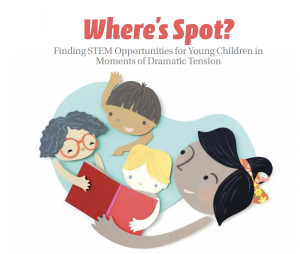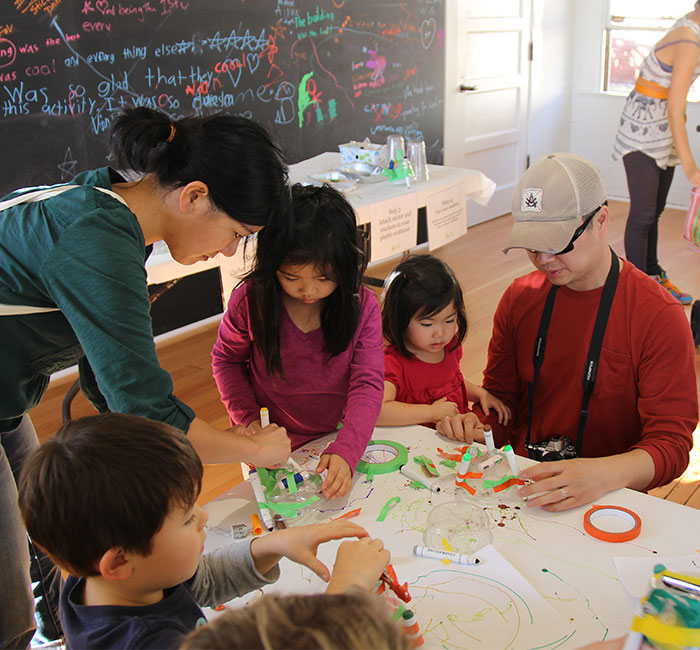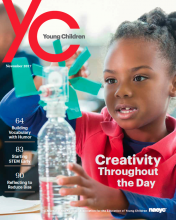Opening minds to new ways of thinking about STEM for young children

Researchers who study children often point out that teaching science and math in the early years is also a great way to support children’s literacy skills. But teachers and administrators lament that it is not so easy to integrate these subjects in day-to-day classrooms. It doesn’t help that the very concepts of science, technology, engineering, and math (STEM) can get short shrift in pre-K, kindergarten, and the early elementary grades.
But what if educators and their students could see STEM as something akin to watching a drama unfold before their very eyes?
That’s the premise of a feature article that I wrote this summer with Elisabeth McClure (the lead author) and science educator Peggy Ashbrook for the Fall issue of American Educator magazine. The article, titled “ ‘Where’s Spot?’ Finding STEM Opportunities for Young Children in Moments of Dramatic Tension,” draws on our research for STEM Starts Early, a report published earlier this year by the Joan Ganz Cooney Center at Sesame Workshop and New America. In that report, we provided recommendations for augmenting policies, practice, and research in early STEM, not to mention how to talk about STEM learning in ways that resonate with parents and the broader public. In a March event at New America, co-hosted with the American Institutes of Research, we highlighted efforts to build and sustain students’ interest in STEM by improving the teaching of STEM subjects in the early years and up through all grade levels. And STEM continues to gain national attention as an education reform strategy, with an announcement just yesterday from the Trump Administration directing the U.S. Department of Education to find money for a $200-million STEM program. (Details were not clear on where the dollars would come from and what programs would need to be cut to fund it.)
The American Educator article explains how moments during STEM activities can be harnessed for language development, storytelling, as well as gaining skills in understanding math or engineering or gathering evidence in scientific observations and through the use of technology.
As we write: “The moments of intense drama these children experience when they test out a new design are the engines that drive STEM practices; it’s what keeps scientists, engineers, mathematicians, and programmers up at night, wanting to try just one more possible solution to a problem. STEM is full to the brim with drama.”
The article opens with a scene from a Baltimore elementary school that I visited earlier this year. It starts like this:
It is a Friday morning at Liberty Elementary School in Baltimore, and a group of first graders are hard at work at a science center on the second floor. Christian, a little boy in a navy sweater and baggy jeans, grabs a bin filled with plastic tracks for building bridges and roadways. “Hey Malaya, come on!” he says to a classmate in a yellow shirt and pigtails. “Let’s build a track!”
Christian works quickly, laying out each piece, rifling through the bin to find exactly the sizes he’s looking for. Malaya plops down on her knees next to him to help. Christian talks as he works and describes his growing structure, which now includes a series of inclined tracks. The two students work side by side, until they are finally ready to attach their two sections together.
Once they do so, they step back to admire their work. Christian picks up a little plastic ball and holds it in suspension just above the tallest ramp in their track structure. “Let’s test this out!” Malaya looks at Christian, and they smile.
At that moment, both kids are electric with anticipation, nearly holding their breath. What is going to happen? Will the ball make it all the way down the track to the edge of the carpet? Will it get stuck along the way? How fast will it go?
To read the rest of the article, please see the full text on the American Educator website.



